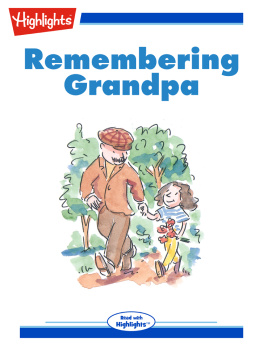MODELS FOR CHANGE
IN
SOCIAL GROUP WORK
MODERN APPLICATIONS OF SOCIAL WORK
An Aldine de Gruyter Series of Texts and Monographs
SERIES EDITOR
James K. Whittaker
Ralph E. Anderson and Irl Carter, Human Behavior in the Social Environment: A Social Systems Approach (fourth edition)
Richard P. Barth and Marianne Berry, Adoption and Disruption: Rates, Risks, and Responses
Larry K. Brendtro and Arlin E. Ness, Re-Educating Troubled Youth: Environments for Teaching and Treatment
Kathleen Ell and Helen Northen, Families and Health Care: Psychosocial Practice
Marian Fatout, Models for Change in Social Group Work
Mark W. Fraser, Peter J. Pecora, and David A. Haapala (eds.), Families in Crisis: The Impact of Intensive Family Preservation Services
James Garbarino, Children and Families in the Social Environment (second edition)
James Garbarino, Patrick E. Brookhouser, Karen J. Authier, and Associates, Special ChildrenSpecial Risks: The Maltreatment of Children with Disabilities
James Garbarino, Cynthia J. Schellenbach, Janet Sebes, and Associates, Troubled Youth, Troubled Families: Understanding Families At-Risk for Adolescent Maltreatment
Roberta R. Greene, Social Work with the Aged and Their Families
Roberta R. Greene and Paul H. Ephross, Human Behavior Theory and Social Work Practice
Jill Kinney, David Haapala, and Charlotte Booth, Keeping Families Together: The Homebuilders Model
Paul K. H. Kim (ed.), Serving the Elderly: Skills for Practice
Robert M. Moroney, Shared Responsibility: Families and Social Policy
Robert M. Moroney, Social Policy and Social Work: Critical Essays on the Welfare State
Peter J. Pecora and Mark Fraser, A Practical Guide to Evaluating Family Preservation Services
Peter J. Pecora, James K. Whittaker, Anthony N. Maluccio, Richard P. Barth, and Robert D. Plotnick, The Child Welfare Challenge: Policy, Practice, and Research
Norman A. Polansky, Integrated Ego Psychology (second edition)
Albert E. Trieschman, James K. Whittaker, and Larry K. Brendtro, The Other 23 Hours
Harry H. Vorrath and Larry K. Brendtro, Positive Peer Culture (second edition)
Betsy S. Vourlekis and Roberta R. Greene (eds). Social Work Case Management
Heather B. Weiss and Francine H. Jacobs (eds.), Evaluating Family Programs
James K. Whittaker and James Garbarino, Social Support Networks: Informal Helping in the Human Services
James K. Whittaker, Jill Kinney, Elizabeth M. Tracy, and Charlotte Booth (eds.), Reaching High-Risk Families: Intensive Family Preservation in Human Services
James K. Whittaker and Elizabeth M. Tracy, Social Treatment, 2nd Edition: An Introduction to Interpersonal Helping in Social Work Practice
First published 1992 by Transaction Publishers
Published 2017 by Routledge
2 Park Square, Milton Park, Abingdon, Oxon OX14 4RN
711 Third Avenue, New York, NY 10017, USA
Routledge is an imprint of the Taylor & Francis Group, an informa business
Copyright 1992 by Taylor & Francis.
All rights reserved. No part of this book may be reprinted or reproduced or utilised in any form or by any electronic, mechanical, or other means, now known or hereafter invented, including photocopying and recording, or in any information storage or retrieval system, without permission in writing from the publishers.
Notice:
Product or corporate names may be trademarks or registered trademarks, and are used only for identification and explanation without intent to infringe.
Library of Congress Cataloging-in-Publication Data
Fatout, Marian.
Models for change in social group work / Marian F. Fatout.
p. cm.
Includes bibliographical references and index.
ISBN 0-202-36077-6 (cloth). ISBN 0-202-36078-4 (paper)
1. Social group work. 2. Group psychotherapy. I. Title.
HV45.F33 1992
361.4dc20
91-29645
CIP
ISBN 13: 978-0-202-36078-2 (pbk)
Social work with groups is an ever expanding area of practice. It is a unique, exciting, dynamic way to help people make the changes in their lives that they themselves desire. Groups are used effectively by social workers today to help people of all ages and all walks of life enhance their social functioning and to cope more effectively with their problems. Group workers are involved in all fields of social work practice and are to be found in mental health, family counseling, child welfare, geriatrics, substance abuse, correctional, and many other settings. They are critically important members of clinical teams attempting to respond to serious mental and emotional social problems. They also work in nonclinical settings in which they seek to foster social growth and enhanced social integration. They work in childrens, youth, and community settings and are integral to community-based programs that seek to facilitate community cohesiveness and more effective community-based responses to social need.
Group work is as old as social work itself. The group work approach emerged in the late nineteenth century as social work was taking initial steps to define its role and to gain recognition as a new profession. Together with social casework, group work was quickly recognized as an effective method of responding to human need and of fostering social functioning. The Settlement House movement played a critical role in the evolution and formulation of group work as a recognized method of social work; however, the antecedents of the group work method are much older and can be found in religious and secular movements that attempted to organize and educate people and provide opportunities for them to meet and exchange ideas and experiences.
Indeed, the historical development of group work is rooted in the historical evolution of the United States and other Western democratic countries. It conveys many of the values of society, such as the democratic process and respecting and valuing the uniqueness of each individual. It makes use of the small group as an agent of change and promotes the idea of mutual aid as an important element in daily life.
As group work was being formalized in social work, other professionals were also evolving approaches for working with groups. Some were focused on particular client groups or problem areas. These models seem to have real potential for assisting social workers in helping their clients to meet needs.
As a result of the historical context within which group work developed in social work, many ideas and notions evolved about how, why, and with whom this methodology could be used. Some believed that groups should be used primarily as a preventive method to work with children and young people from poor neighborhoods who were at risk of becoming involved in crime and other forms of antisocial behavior. Others thought that the developmental implications of group work should be emphasized so that groups would be seen as a microcosm of social living in which people could improve their social skills, enhance social functioning, and learn how to interact more effectively with others. Yet another view was that social work with groups would be most effective in treatment settings such as mental hospitals, correctional facilities, and other agencies where clients with serious problems could be helped to solve their difficulties.












